From the Field
April 22:
Rich Hoyer on his just-completed private tour in Costa Rica
One of the participants from the regular Costa Rica in Spring tour requested an extra three days of birding to look for owls and rails, and we had an amazingly productive trip north to the Caño Negro region.
We started with a Uniform Crake, a skulky bird in wet forest understory thickets, which we eventually coaxed out to cross the trail. Then at the Medio Queso wetlands near the Nicaragua border we scored with our primary target, Yellow-breasted Crake. We saw three of them very well, one of them being particularly bold.
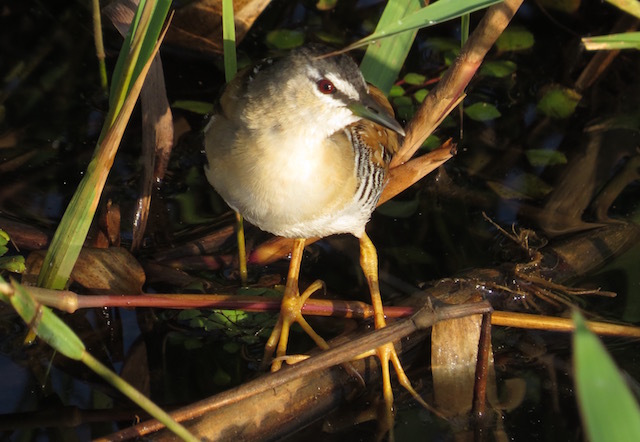
Yellow-breasted Crake
White-throated Crake was also seen easily on our short boat ride on the channel through the wetlands.
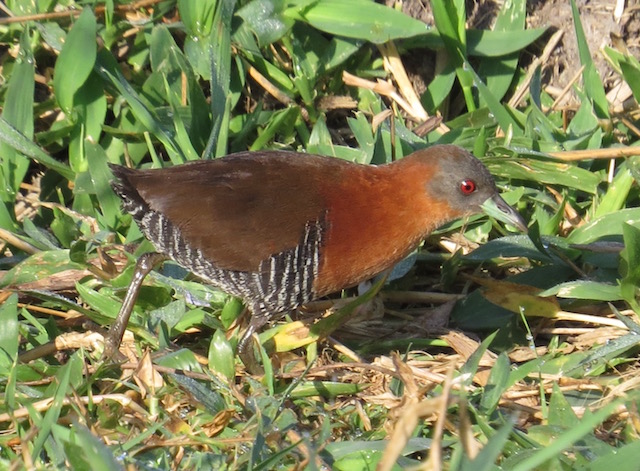
White-throated Crake
The only Least Bittern we saw flew in over our heads and landed fully exposed in a clump of giant reed, and it was hard to tear ourselves away.
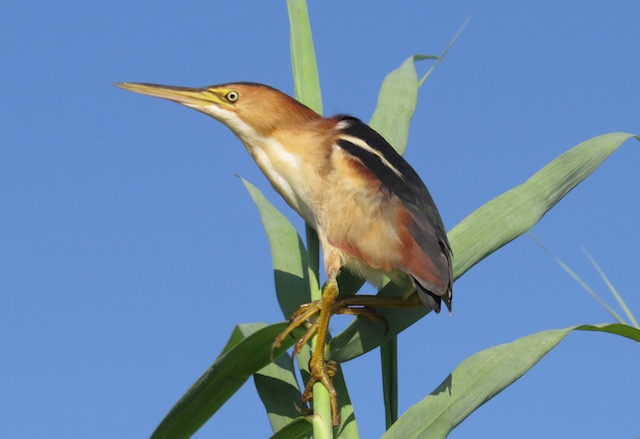
Least Bittern
We then spent an afternoon and full morning at Caño Negro, and on the boat ride there we connected with a single Sungrebe, actually now known to be very closely related to rails.
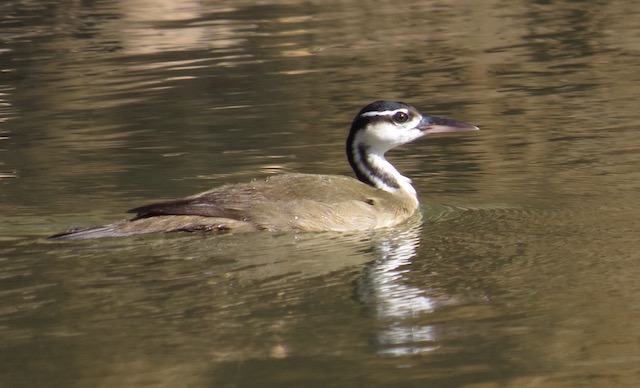
Sungrebe
We also improved our views of Gray-necked Wood-Rail, even though we had seen it on the main tour.
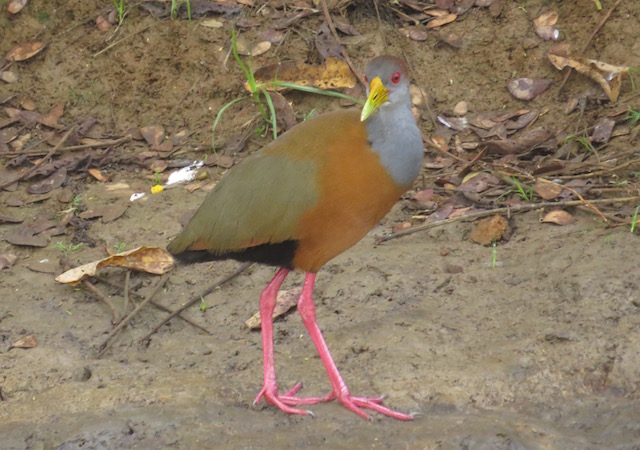
Gray-necked Wood-Rail
Somehow the main tour missed out on all potoos, but we had two on our extension. On our second night of owling we watched a Great Potoo making foraging sallies from a very close post, and this Common Potoo was brooding a very young chick just a short walk from our hotel.
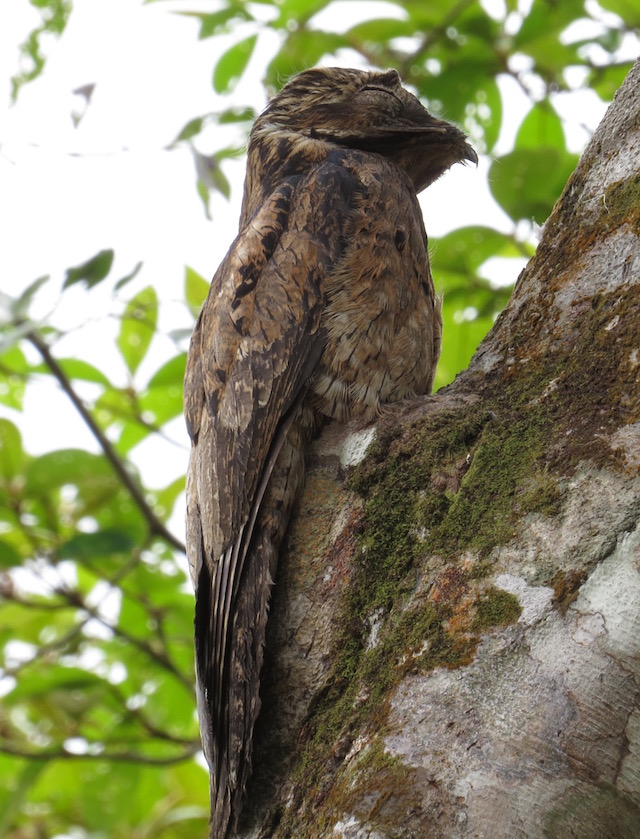
Common Potoo
We had done extremely well with owls on the main tour, so our principle target here was just Striped Owl, which we finally found after hearing several Pacific Screech and Mottled Owls and seeing a Black-and-white Owl.
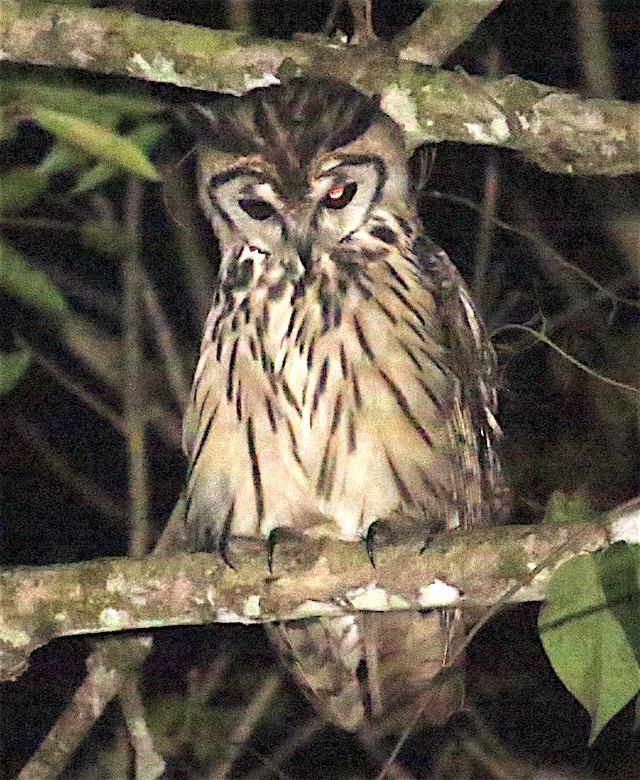
Striped Owl
It was a fabulous finale to some excellent birding.
April 18:
Gavin Bieber on his just-completed tour, Texas: The Rio Grande Valley in Spring
We just finished what was probably our best South Texas in Spring tour ever. With the valley specialties all showing well, a very strong showing of migrant passerines and virtually all of the possible shorebird species we saw a remarkable 255 species in eight days of birding. The stunning Green Jay was elected bird of the trip,
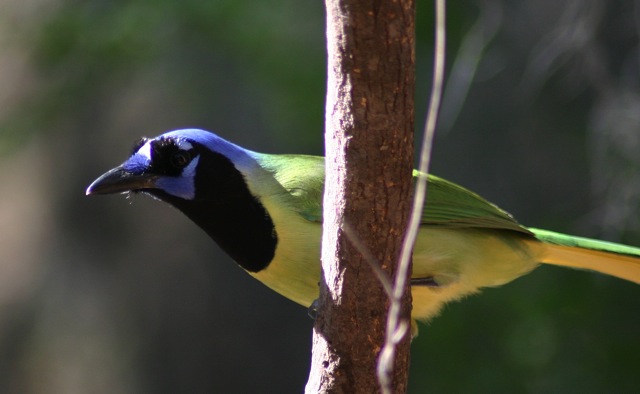
Green Jay
but other valley birds like this nesting White-tipped Dove, elegant Scissor-tailed Flycatcher, chattering Green Parakeets and several singing Clay-colored Thrushes were appreciated too.
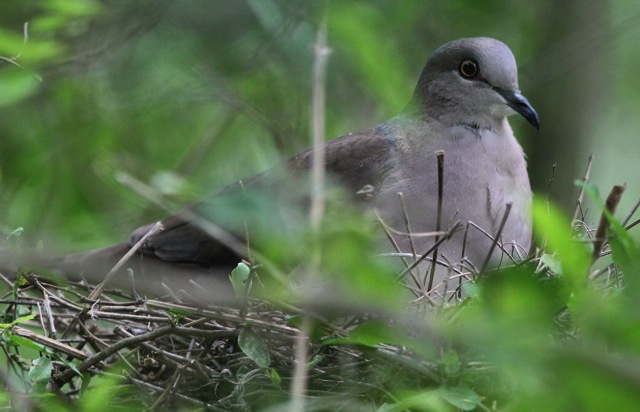
White-tipped Dove
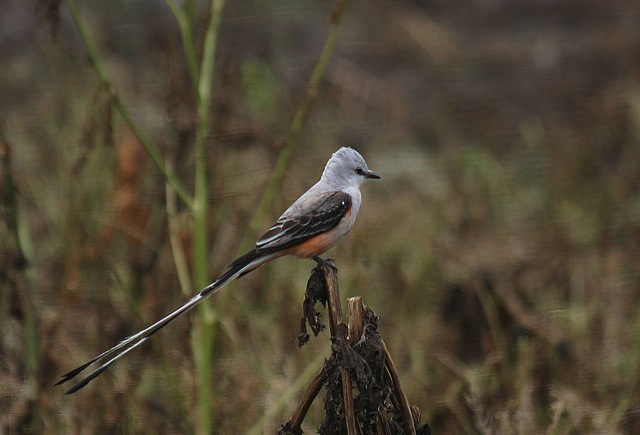
Scissor-tailed Flycatcher
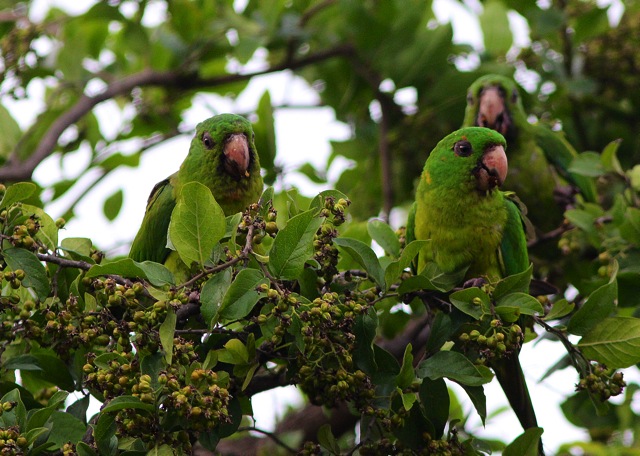
Green Parakeet
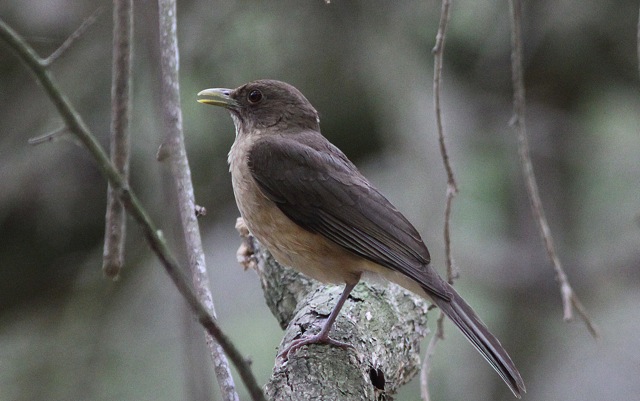
Clay-colored Thrush
On the coast we encountered unsettled weather, with low numbers but excellent diversity of migrants including a few of the rarer species like this handsome Cerulean Warbler.
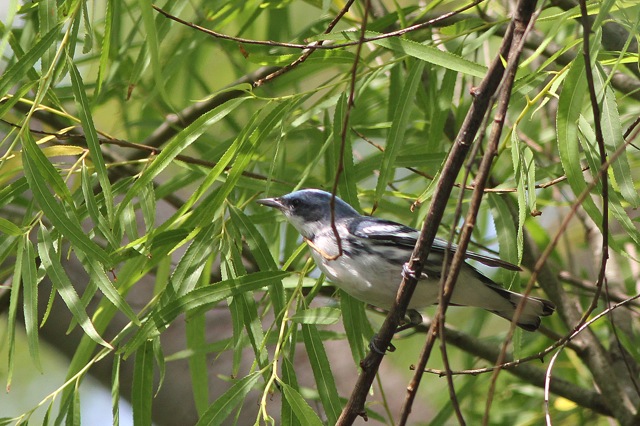
Cerulean Warbler
Waders like Stilt Sandpipers were in fine feather as they headed north towards their breeding grounds in the high arctic.
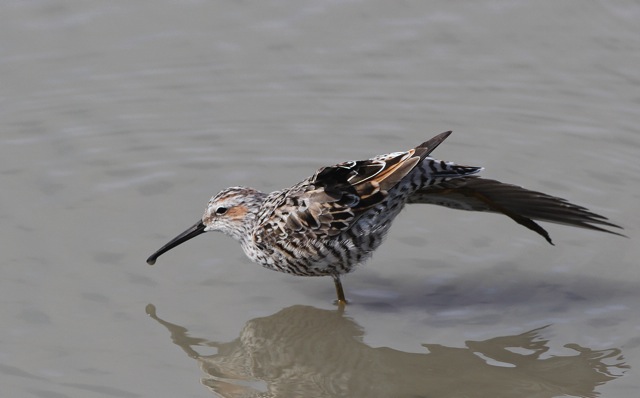
Stilt Sandpiper
And who could forget the 10-minute encounter with this stunning Least Bittern as it crept across the marsh just feet from the group. South Texas certainly has a lot to offer the visiting naturalist!
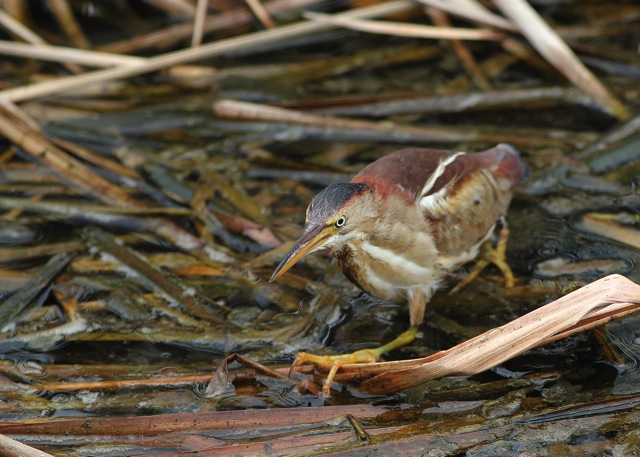
Least Bittern
April 14:
Rich Hoyer on the conclusion of his tour, Costa Rica in March
Our final days on the Caribbean slope starting at Arenal volcano continued to be full of enriching experiences, fascinating and beautiful species, and spectacular scenery. We couldn’t have had better viewing conditions of the volcano from our rooms at Arenal Observatory Lodge, which was also very birdy.

Arenal volcano
The fruit feeders there were swarming with bold Montezuma Oropendolas and several tanagers, and the purple porterweed hedges hosted half a dozen hummingbirds including gorgeous White-necked Jacobins and shockingly red-footed Bronze-tailed Plumleteers. This Common Tody-Flycatcher was busy building a nest in a shrub next to the walkway immediately in front our rooms.

Common Tody-Flycatcher
We then moved over to the Sarapiquí region, where we first spent most of a day at La Selva Biological Station. Among the birds, we were fortunate to see three Great Tinamous and even a Slaty-breasted Tinamou right beside the trail, teased in a pair of Black-headed Tody-Flycatchers, succeeded in discovering a day roost of a Vermiculated Screech-Owl, and had a wonderful time with a most cooperative pair of Chestnut-colored Woodpeckers.

Chestnut-colored Woodpecker
La Selva is always full of amazing plants and critters, amongst which we saw Strawberry Poison Frogs, a huge, silver-backed Savigny’s Orb Weaver, a bullet ant, a stunning Glorious Blue Skipper, and a roost of Honduran White Bats in their leaf tent, looking like what our local guide called furry marshmallows.

Glorious Blue Skipper

Honduran White Bats
Our second day was divided between the lush foothill forest of Braulio Carrillo National park and the vibrant grounds of our lodge. The trail at Braulio was rather quiet for much of the morning, but we eventually stumbled into a terrific mixed flock with many tanagers and furnariids, found two elusive manakins – White-crowned (for the second time in 11 years) and White-ruffed, delighted in the incomparable song of Nightingale Wren, and got very lucky to find the scarce and easily overlooked Lattice-tailed Trogon, our seventh trogon of the tour.

Lattice-tailed Trogon
Just before we left Braulio, Ricardo, our amazing driver and spotter of birds and wildlife showed us a Brown Vine Snake that had been hunting lizards on the park’s chain-link entry gate for an hour while we had been on the trail. We were lucky that it was still there.

Brown Vine Snake
On our hotel grounds of Sueño Azul, we took a couple strolls in different directions, seeing our only Sunbittern, both Bare-throated and Fasciated Tiger-Herons, a beautiful White Hawk, and a Gartered Trogon, our final and eighth (!) species, the most common and widespread of all that had surprisingly evaded us until now. Ricardo joined us for these walks, spotting one of the biggest surprises of the tour, a Pinnated Bittern sitting still in a clump of grass in one of the several ponds on the property.

Pinnated Bittern
We concluded the tour at La Paz Waterfall Gardens, where we were reacquainted with cloud forest birds such as Slate-throated Redstart, Slaty-backed Nightingale-Thrush, and the haunting songs of Black-faced Solitaire. The hummingbird feeders were also a hit, giving us excellent views of male and female Green Thorntails, a spritely hummingbird that comes to feeders in only a few places.

Female Green Thorntail
I’m already looking forward to next year’s tour from March 4-18.
April 10:
Gavin Bieber from his recently completed tour, Panama: Spring at the Canopy Tower
We just wrapped up a great week at Panama's famous Canopy Tower, followed by a five-day extension to the Canopy Lodge. It is always a pleasure to return to this fantastic and unique lodge, surrounded by an excellent mix of habitats and a great diversity of birds. Some of the highlights would have to include our close views of a stunning male Blue Cotinga and several male Shining Honeycreepers from Cerro Azul, White-whiskered Puffbirds (one of 4 species of Puffbirds for the trip), White-tailed Trogon (one of 6 species for the tour) and a day active Night Monkey from the road below the tower, and the foraging Cinnamon Woodpeckers from the tower itself. As always the gorgeous array of gaudy hummingbirds (24 species), and tanagers (33 species) stole the show. We encountered a few surprises too, such as the Tody Motmot at Cerro Azul, a pair of Whistling Herons along the Pacific coast and the Blue-throated Goldentail at Altos del Maria above the Lodge. In all we tallied just shy of 390 species of birds, along with 18 mammals and 24 species of reptiles and amphibians in just 10 days in the field! This tour continues to impress me; the diversity and richness of the region, paired with ease of access and the comforts of the lodge make for a truly wonderful experience.

Blue Cotinga

Shining Honeycreeper

White-whiskered Puffbird

White-tailed Trogon

"Day" Night Monkey

Cinnamon Woodpecker
April 7:
Jon Feenstra on his recently completed tour, Ecuador: The Amazon Lowlands
A vast carpet of greenery stretched out before us as we descended on our flight from the lofty heights of Quito in Andean Ecuador to the steamy lowlands of the Amazon rainforest. Though flat and green it looked, it hid an astounding diversity from tiny little gray things easy to pass by like Dwarf Tyrant-Manakins to big showy Scarlet Macaws and White-throated Toucans. We had two days of birding in which we saw all five species of Ecuador’s kingfishers (Ringed, Amazon, Green, Green-and-rufous, and American Pygmy) and by the end of the trip and six full days in the rainforest we had also seen six species of cotinga and twenty-five species of antbird. All of that in front of a backdrop of a dark forest of giant trees draped with thick vines, quiet canoe trips through flooded forests, canopy towers that provided stunning rainforst overviews, “clay licks” full of parrots and parakeets, big caiman lurking in the calm waters, and monkeys launching themselves through the canopy. When we were done we sped up the swollen Rio Napo, steering around floating logs and stumps, on our way out of the jungle and back into the realm of civilization – probably back where we belong, but not always where we want to be.

American Pygmy Kingfisher

The spectacular Red-necked Woodpecker, one of 11 woodpecker species on the tour

Heading home...

Blue-headed and Mealy Parrots at a "clay lick"

View from the canopy tower
April 4:
Rich Hoyer from his on-going tour, Costa Rica.
Thus far we've touched on several unbelievably birdy Pacific slope sites. Resplendent Quetzals showed well at the Cerro de la Muerte region, as did most of the regional endemics including Ochraceous Pewee, Timberline Wren, and this most confiding of Volcano Juncos.

We saw several Tufted Flycatchers at very close range in the lush Costa Rican Oak forests.

Our days on the Osa Peninsula were packed with birds, despite the area being unusually hot and dry, even for this time of year. A Fiery-billed Aracari that found a crab high in the mangroves as we arrived in the area was a memorable sighting.

A female Black-hooded Antshrike foraged at arm’s length for several minutes one morning, providing for quite a photographic opportunity.

The many Band-tailed Barbthroats chasing each other and feeding from the giant prayer plants blooming in every wet spot were also a favorite.

One morning a large troop of Central American Squirrel Monkeys made the rounds right by Bosque del Rio Tigre lodge.

It’s been a terrific tour for owls, with nine species already, including this Pacific Screech-Owl on its day perch at Ensenada Lodge.

We’ve just arrived on the Caribbean slope, and it’s hard to imagine there could be any birds left for us to see, but it’s a totally new habitat and ecoregion, known for its high diversity. Stay tuned for the final report.
April 2:
Fabrice Schmitt and Steve Howell on their just-completed cruise, Valparaiso to Los Angeles
Covering 60 degrees of latitude—a third of the planet’s surface—exposed us to many different habitats, both on land and at sea, as exemplified by a total of 32 tubenose species (and 57 species for this and the preceding cruise combined!).

The unique Inca Tern, icon of the Humboldt Current, was a feature of the first week at and around our coastal stops.

Our first day at sea was filled with Juan Fernandez Petrels, as well as excellent views of this Bryde’s (pronounced “Bru-duh’s”) Whale.

The fancy White-bellied Storm-Petrel was also seen this first sea day, a taste of the storm-petrel show soon to come.

Off southern Peru, in one day we saw 1000+ De Filippi’s (or Masatierra) Petrels, 600+ Hornby’s (or Ringed) Storm-Petrels, and 250 White-faced Storm-Petrels. The white underwings and fluttery, kicking flight of the White-faced (here) contrasted with...

The floppy, sailing and wheeling flight of the Hornby’s, with its striking dark underwings.

In Pisco, Peru, a highlight was great views of Humboldt Penguins, here panting in the heat.

Landbirds at our widely scattered stops between Chile and Mexico ranged from superb views of Andean Tinamou in Peru...

To displaying Long-tailed Manakins in Nicaragua.

The relaxing, warm blue tropical waters...

Featured numerous dolphins, turtles, and boobies, here a Brown Booby resting on an Olive Ridley Turtle, ...

And here a Nazca Booby that flew by at arm’s length!

Flyingfish added another dimension, here a Pied-tailed Necromancer.

Our birding group aroused curiosity among many passengers, and even the captain came to visit us, here posing graciously for a photo.

Our last day off the Baja California Peninsula brought us back to cooler waters, home to Laysan Albatross, here, plus Craveri’s and Guadalupe Murrelets.

Birding with beers at the end of the last day—what a trip!
March 30:
Susan Myers on her recently completed tour, Cambodia
Cambodia was fabulous as always! The weather was a little hotter and drier than usual but the birds, mostly, cooperated. On top of the great birds, Angkor was amazing, the Cambodian people were charming and the food was delicious, exotic and memorable.
We started our tour in Siem Reap, a charming city located on the doorstep of the World Heritage site, the incomparable Angkor Wat and its many associated temples. Using Siem Reap as our base we explored various birding sites, including a visit to Prek Toal, a waterbird sanctuary located on the east side of Tonle Sap Lake. Tonle Sap is the largest lake in Southeast Asia and one of the most remarkable in the world due to its unique flow reversal from the Tonle Sap River. The lake is the food bowl of Cambodia and its vastness has to really be seen to be believed! The diverse and abundant birdlife to be found at the sanctuary is also astounding and exploring this area was an unforgettable experience.

Greater (right) and Lesser Adjutants and a Painted Stork Image: David Fisher
Venturing further afield, we journeyed out for a three day stay in the remote village of Tmatboey - an experience with a very different place and culture. We birded out and around the rice fields dotted through the dry forests here, spying White-shouldered Ibis, seven species of woodpecker including the fancy Black-headed Woodpecker and a wonderful family of Great Slaty Woodpeckers, the diminutive Collared Falconet, and a host of others special birds. On our journey back to Siem Reap, our local guy Mony expertly spotted a White-rumped Falcon, a much hoped for rarity that we were able to observe at length.

Watching and waiting as the sun comes up over the Tmatboey woodlands
Later during our tour, we spent a day around the ancient ruins of Angkor, an unforgettable experience; this really is living history! Angkor means Capital City in Khmer, the language of Cambodia, and its centerpiece is Angkor Wat, the immense temple that is Cambodia’s most famed symbol (it’s depicted on the national flag). But there are many other remarkable ancient buildings and religious sites, including Bayon, known for its many serene, smiling stone faces as shown in this photo, and Ta Prom, popular for its atmospheric overgrown appearance. And there’s an added bonus of some excellent birding throughout the whole ancient city.

the stone faces of Ta Phrom
From Siem Reap we continued east to the delightful town of Kratie to look for the near endemic Mekong Wagtail, stopping to buy some jackfruit en route. It’s the world’s largest fruit.

A jackfruit stand
Kratie is perched on the banks of the Mekong River, the 12th longest in the world, and in terms of human civilization, unarguably one of the most important. It’s also immensely important for the ecology of Southeast Asia, and remarkably home to an endemic bird described as recently as 2001 – the Mekong Wagtail. In order to find this attractive species we took a small boat out amongst the braided islands where the bird makes its home. We soon found a pair and watched them quietly at close quarters before turning our attention to the pod of Irrawaddy Dolphins cavorting nearby.

Mekong Wagtail Image: David Fisher
Our final destination was the beautiful forest of Bokor, a former hill station and now a national park. We searched the forest trails for a whole different suite of mid montane birds, unsuccessful in our search for the elusive Cambodian Partridge, we were nevertheless very satisfied with great list of exciting birds including a superb male Silver Pheasant, a young Rufous-bellied Eagle practicing its mid air catching skills, prehistoric-looking Wreathed Hornbills, and more Asian Fairy Bluebirds than I’ve ever seen. A fitting end to a memorable tour!

Sunrise over Bokor National Park
March 30:
Rich Hoyer and Gavin Bieber on their just-completed tour, Jamaica.
For the 18th tour in a row, we managed to see all 27 currently recognized Jamaican endemic birds. Equally if not more satisfying we had wonderful views of all, plus so many other species, critters, and plants in this tropical paradise. One of our first endemics was the Jamaican Lizard-Cuckoo, sometimes one of the scarcer birds that waits until near the end of the tour to show itself. We completed the set with great views of the scarce Blue Mountain Vireo, which had us a bit worried when it didn’t appear on the first four days. Jamaican Tody was voted the tour favorite, as it was seen every day, often very well, and like all todies is endowed with an inimitable charm. Close behind in votes was Crested Quail-Dove, which after having been only glimpsed in the best sites unexpectedly walked out on the lawn at Marshall’s Pen in front of the entire group. Other favorites were Jamaican Woodpecker, the two forms of Streamertail, the distinctive and very common Orangequit, an elegant and very close White-tailed Tropicbird, an amazing three Spotted Rails and a Barn Owl that emerged well before dusk at the Upper Black River Morass, the many migrants such as lovely Prairie Warblers and two Swainson’s Warblers seen unusually well, a breeding colony of Cave Swallows in the storage beneath the floor of our accommodation, several pairs of Jamaican Becards (the only becard in the Caribbean), and a last-minute Greater Antillean Elaenia that appeared suddenly where it was least expected.
We had great views of Jamaican Oriole on our first day, the only bird with Jamaica in its name that’s not a true endemic.
The unique Jamaican Euphonia was seen nearly every day.
Jamaican Tody is almost always a top favorite of the tour.
Jamaican Woodpecker is not hard to see, especially when feeding on orange halves.
Orangequits come to feeders with oranges as well as open cups of granulated sugar.
March 26:
Jake Mohlmann on his just-completed tour, Nebraska: The Sandhills and the Platte River
We breezed through just over 1,000 miles of America’s Heartland in search of the last lingering waterfowl, early spring migrants, an unbelievable crane show, and a legitimate chicken dance. It started out along the deciduous forests of the Missouri River Valley where residents such as Pileated Woodpecker, American Woodcock, and Carolina Wren were starting to set up shop on their breeding grounds.

A Carolina Wren announcing the borders of its territory
Heading west we meandered through the tallgrass prairies successfully finding many sparrow species such as Fox, American Tree, and Harris’s as well as both Eastern and Western Meadowlarks.

Eastern Meadowlark in full song
Scattered throughout were scads of ponds and lakes which held an impressive array of waterfowl and we had great looks at Wood Duck, Bufflehead, Common Goldeneye, and all three merganser species. A smattering of geese were still loafing about and we took time to enjoy Cackling Geese mixed with their Canada cousins as well as point-blank views of Greater White-fronted Geese.

Greater White-fronted Geese soaking in the sun
Sandhill Cranes were abundant and we watched at sunset as many of the 270,000 estimated birds came pouring in overhead - a mind-boggling visual and aural experience - landing to roost along the Central Platte River. Usually it’s not until early April that a few Whooping Cranes start showing up, but we were delighted with our great good luck when one of these very rare birds landed upriver just before the sun went down.

Sandhill Cranes en mass

Whooping Crane
Our last exploration lead us to the famous Sandhills region of Central Nebraska which covers about one quarter of the state. Our main goal here was to view the extravagant courting rituals of the Greater Prairie-Chicken. We succeeded in capturing this mind-blowing phenomenon on film, at close range, from our comfortable blind set amongst the hills.

Greater Prairie-Chickens: inquisitive female checks out courting males
Our group’s chemistry was amazing and we all had a wonderful time sharing stories along the way which added to a truly memorable experience. Cheers!

Group cheer





